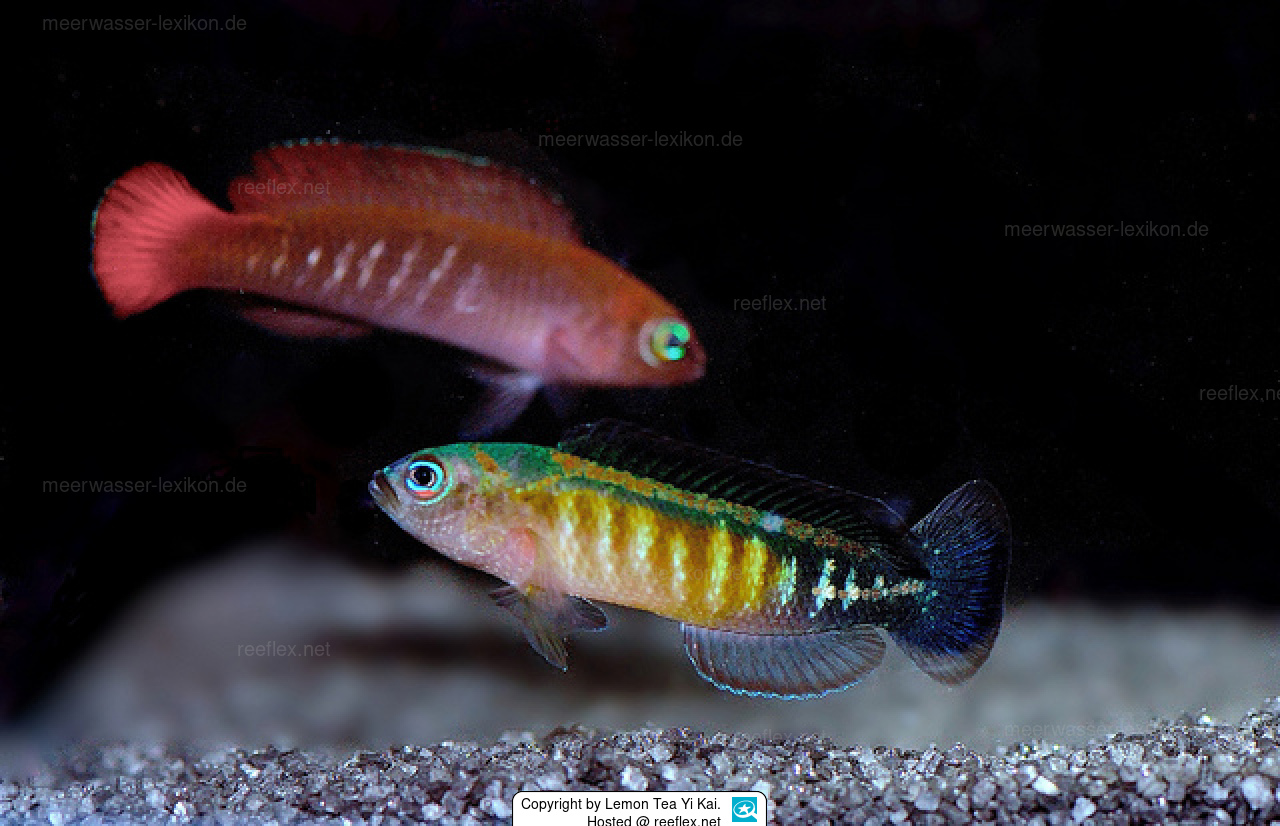Info
Pseudochromis cyanotaenia, Bleeker, 1857
We would generally assess this fish in the same way as other dwarf seabasses in terms of behavior, although it is clear that experiences can vary greatly, which is also due to the different fish stock and the size of the tank.
They are often shy at first, but are hardy and can hardly be tamed. They quickly take any kind of food and quickly adapt to aquarium life. They also appear to be less susceptible to disease, like all others of the species.
This species of dwarf seabass is one of the less aggressive fish and tends to live hidden away in the aquarium.
$Pseuchrogeschl
The female is usually beige-colored with a reddish tail.
Since they are only seen in pairs in nature, it is recommended to keep them in pairs in the aquarium.
Keeping with other species:
Shrimp
Small shrimp, such as Ancylomenes holthuisi, Lysmatella prima, Urocaridella antonbruunii, Thor amboinensis and many other small species can fall prey to the dwarf seabass.
This species of dwarf seabass is rarely seen in shops.
am 18.08.12#2
So unterschiedlich kann es sein. Ich habe vor ein paar Tagen ein Weibchen aus einem anderen Becken zu diesem Männchen dazu. Ich dachte er wäre längst gestorben, weil ich ihn nie gesehen hatte.
Das Weibchen wurde regelrecht in den Steinaufbau gelockt, und seit 2 Tagen seh ich beide nicht mehr.
Ich muss allerdings dazu sagen daß das Becken etwa 4500 liter hat, und noch einige anadere drin schwimmen. Werde weiter berichten, Versteckmöglichkeiten haben sie genügend.
am 13.12.10#1
Ich halte seit 3 Monaten ein männliches Tier.
Dieser Barsch ist aber alles andere, nur nicht friedlich. Ein nachgesetztes Weibchen hat er zu Tote gehetzt, ebenso 3 kleine Grundeln. Ebenso hat er meine beiden Putzergranelen beim Häuten gefressen. Er ist auch nicht scheu, sondern schwimmt den ganzen Tag durchs Becken. Nach meinen kurzen Erfahrungen, würde ich ihn nur mit größeren Fischen zusammen setzen, oder als letzten Fisch einsetzen. Bei mir war er der 2.Fisch. Scheinbar meint er, dass ihm das Becken alleine gehört.







 Lemon Tea Yi Kai, Japan
Lemon Tea Yi Kai, Japan






































































